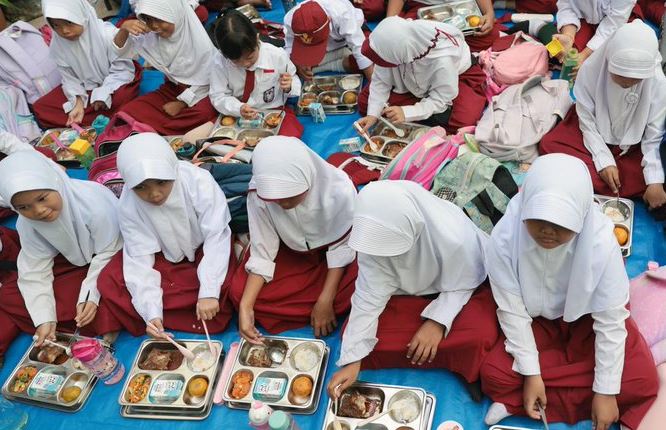Indonesian President Prabowo Subianto’s multi-billion-dollar initiative to provide free meals to over a quarter of the nation’s population began on Monday, with 570,000 people receiving meals on its first day.
Despite being the flagship policy of Prabowo’s election campaign last year, the program was launched with minimal fanfare. Only 190 kitchens participated on day one, delivering meals to schoolchildren and pregnant women across more than 20 provinces.
Massive Scale and Logistical Challenges
The program aims to expand significantly, targeting 82.9 million beneficiaries—nearly 30% of Indonesia’s 280 million population—by 2029. This year alone, the first phase aims to feed 15 million people, costing 71 trillion rupiah ($4.39 billion).
The free meal initiative is a substantial logistical undertaking, with military and government personnel assisting in preparation and distribution. By March, the number of recipients is expected to grow to 3 million, with further expansions planned throughout the year.
A Strategic but Controversial Policy
Prabowo has defended the program as a strategic move to combat child malnutrition and stimulate regional economic growth. However, its estimated $28 billion cost over five years has raised concerns among economists about its impact on Indonesia’s fiscal discipline.
Positive Reception Among Beneficiaries
At an elementary school in West Jakarta, students were served meals including rice, fried chicken, tofu, beans, and oranges. Parents expressed relief and gratitude for the program.
“Thank God, this helps us. We normally had to work hard preparing food every morning, and now we don’t,” said Hana Yohana, a parent of a first-grader.
Boosting Local Milk Production
Milk is also part of the meal plan, though not served daily. To support the initiative, Indonesia has imported dairy cows from Australia to increase local milk production.
This program represents a bold effort to address nutrition challenges and bolster food security, though its long-term success will depend on its execution and fiscal sustainability.



